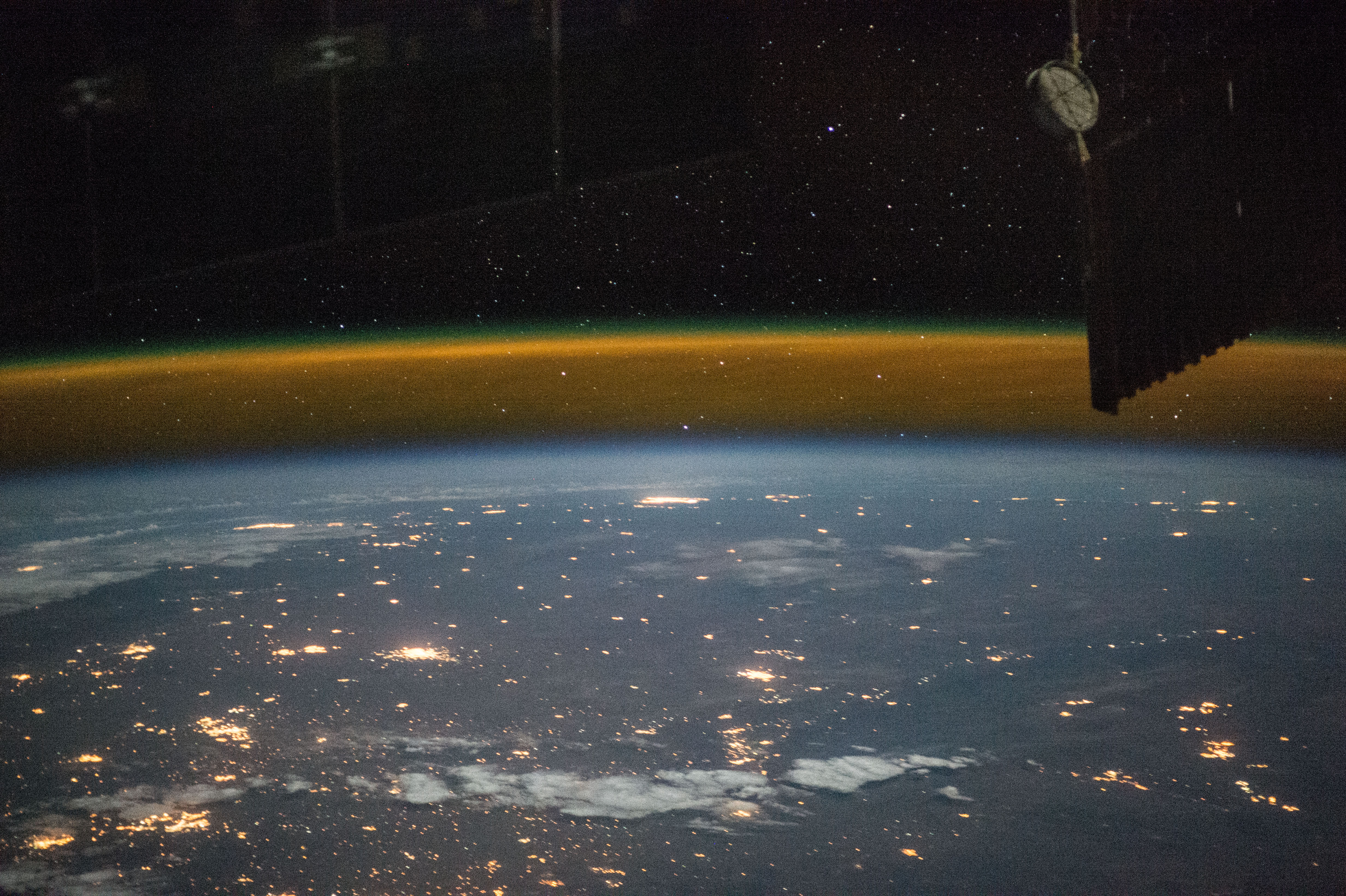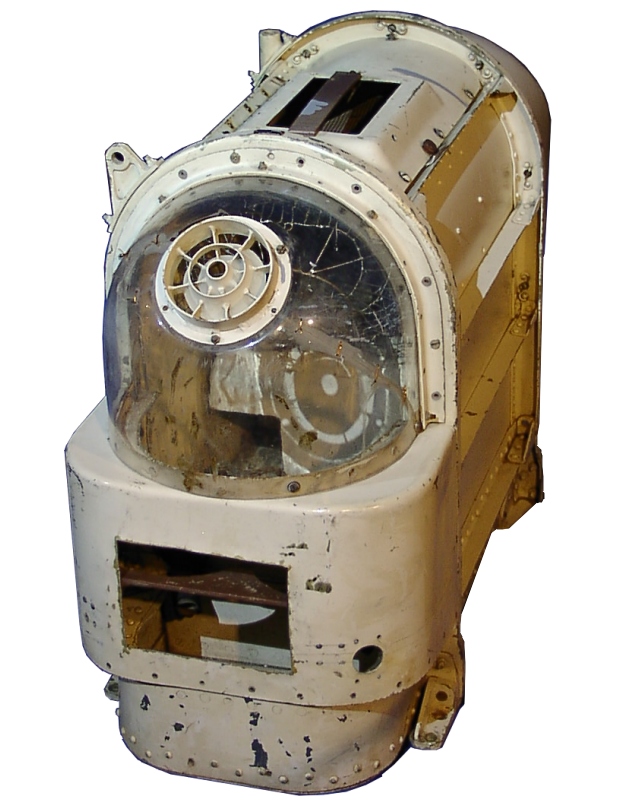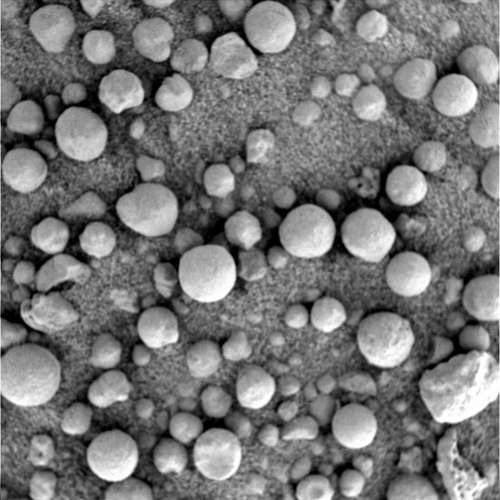|
Albert I (monkey)
Albert I was a rhesus macaque monkey and the first mammal launched on a rocket (V-2 Rocket "Blossom No. 3") on June 18, 1948.Beischer, Dietrich E. Fregly, Alfred R. (1962ANIMALS AND MAN IN SPACE. A CHRONOLOGY AND ANNOTATED BIBLIOGRAPHY THROUGH THE YEAR 1960 NAVAL SCHOOL OF AVIATION MEDICINE PENSACOLA FL. The launch was staged at White Sands Proving Ground, Las Cruces, New Mexico. Albert I, a nine-pound monkey, was anesthetized and placed inside the rocket's crew capsule in the nose of the V-2 rocket. The flight did not reach outer space. Background The Hermes program, beginning in 1944, had the stated objective of testing missiles, in particular reverse-engineering the German V-2 rocket. It was based out of White Sands in New Mexico and had launched 37 V-2 rockets prior to the launch of Albert I, 8 of which carried biological payloads consisting of seeds and/or fruit flies. Albert was the first mammal launched on a rocket by the United States, and would have been the first m ... [...More Info...] [...Related Items...] OR: [Wikipedia] [Google] [Baidu] |
Albert II (monkey)
Albert II was a male rhesus macaque monkey who was the first primate and first mammal to travel to outer space. He flew from Holloman Air Force Base in New Mexico, United States, to an altitude of 83 miles (134 km) aboard a U.S. V-2 sounding rocket on June 14, 1949. Albert died upon landing after a parachute failure caused his capsule to strike the ground at high speed. Albert's respiratory and cardiological data were recorded up to the moment of impact. Albert II's flight, run by the Air Force Missile Development Center, Alamogordo Guided Missile Test Base and organized with the help of Holloman Air Force Base, followed the likely preflight death of Albert I (monkey), Albert I before a high mesosphere, mesospheric flight aboard a V-2 rocket on June 18, 1948. The capsule was redesigned in-between flights to enlarge the cramped quarters experienced by Albert I (monkey), Albert I. Previous life launched into space Before Albert II, the only previous known living beings Fruit fl ... [...More Info...] [...Related Items...] OR: [Wikipedia] [Google] [Baidu] |
Kármán Line
The Kármán line (or von Kármán line ) is a conventional definition of the Outer space#Boundary, edge of space; it is widely but not universally accepted. The international record-keeping body Fédération Aéronautique Internationale, FAI (Fédération aéronautique internationale) defines the Kármán line at an altitude of above above mean sea level, mean sea level. While named after Theodore von Kármán, who calculated a theoretical limit of altitude for aeroplane flight at above Earth, the later established Kármán line is more general and has no distinct physical significance, in that there is a rather gradual difference between the characteristics of the atmosphere at the line, and experts disagree on defining a distinct boundary where the atmosphere ends and space begins. It lies well above the altitude reachable by conventional airplanes or high-altitude balloons, and is approximately where satellites, even on very eccentric trajectories, will Orbital decay, dec ... [...More Info...] [...Related Items...] OR: [Wikipedia] [Google] [Baidu] |
List Of Individual Monkeys
This annotated list of individual monkeys includes monkeys who are in some way famous or notable. The list does not include notable apes or fictional primates. Monkey actors * Crystal – (brown capuchin) played in ''The Hangover Part II'', ''Night at the Museum'', '' Night at the Museum: Battle of the Smithsonian'', '' Night at the Museum: Secret of the Tomb'' and as "Annie's Boobs" in ''Community''. Monkeys used in experiments * Able (rhesus macaque) and Miss Baker ( Peruvian squirrel monkey), both female – the first monkeys sent into space who survived the experience. They were launched on 28 May 1959 in the nose cone of a Jupiter AM-18 missile as a test of NASA's launch facilities at Cape Canaveral and procedures for retrieving astronauts after splashdown. Miss Able died a few days after the mission, but Miss Baker lived another 25 years. * Albert I – (rhesus monkey) the first primate and first mammal launched on a rocket (a June 18, 1948 V-2 flight), although it did ... [...More Info...] [...Related Items...] OR: [Wikipedia] [Google] [Baidu] |
Enos (chimpanzee)
Enos (born about 1957 – died November 4, 1962) was a Common chimpanzee, chimpanzee launched into space by NASA, following his predecessor Ham (chimpanzee), Ham. He was the only chimpanzee, non-human primate to orbit the Earth, and the third hominid to do so after cosmonauts Yuri Gagarin and Gherman Titov. Enos's flight occurred on November 29, 1961. Enos was brought from the Miami Rare Bird Farm on April 3, 1960. He completed more than 1,250 training hours at the University of Kentucky and Holloman Air Force Base. Training was more intense for him than for Ham (chimpanzee), Ham, who had become the first great ape in space in January 1961, because Enos was exposed to weightlessness and higher g-force, ''g''s for longer periods of time. His training included psychomotor instruction and aircraft flights. Enos was selected for his Project Mercury flight only three days before launch. Two months prior, National Aeronautics and Space Administration, NASA launched Mercury-Atlas 4 o ... [...More Info...] [...Related Items...] OR: [Wikipedia] [Google] [Baidu] |
Hominidae
The Hominidae (), whose members are known as the great apes or hominids (), are a taxonomic Family (biology), family of primates that includes eight Neontology#Extant taxa versus extinct taxa, extant species in four Genus, genera: ''Orangutan, Pongo'' (the Bornean orangutan, Bornean, Sumatran orangutan, Sumatran and Tapanuli orangutan); ''Gorilla'' (the Eastern gorilla, eastern and western gorilla); ''Pan (genus), Pan'' (the chimpanzee and the bonobo); and ''Homo'', of which only Human, modern humans (''Homo sapiens'') remain. Numerous revisions in classifying the great apes have caused the use of the term ''hominid'' to change over time. The original meaning of "hominid" referred only to humans (''Homo'') and their closest extinct relatives. However, by the 1990s humans and other apes were considered to be "hominids". The earlier restrictive meaning has now been largely assumed by the term ''Hominini, hominin'', which comprises all members of the human clade after the split ... [...More Info...] [...Related Items...] OR: [Wikipedia] [Google] [Baidu] |
Ham (chimpanzee)
Ham (July 1957 – January 19, 1983), a chimpanzee also known as Ham the Chimp and Ham the Astrochimp, was the first great ape launched into space. On January 31, 1961, Ham flew a suborbital flight on the Mercury-Redstone 2 mission, part of the U.S. space program's Project Mercury. Ham was known as "No. 65" before he safely returned to Earth, when he was named after an acronym for the laboratory that prepared him for his historic mission—the Holloman Aerospace Medical Center, located at Holloman Air Force Base in New Mexico, southwest of Alamogordo. His name was also in honor of the commander of Holloman Aeromedical Laboratory, Lieutenant Colonel Hamilton "Ham" Blackshear. Early life Ham was born in July 1957 in French Cameroon, captured by animal trappers and sent to the Rare Bird Farm in Miami, Florida. He was purchased by the United States Air Force and brought to Holloman Air Force Base in July 1959. Ham was sold to the United States Air Force for $457. There were ... [...More Info...] [...Related Items...] OR: [Wikipedia] [Google] [Baidu] |
Russian Space Dog
During the 1950s and 1960s the Soviet space program used dogs for sub-orbital and orbital space flights to determine whether human spaceflight was feasible. The Soviet space program typically used female dogs due to their anatomical compatibility with the spacesuit. Similarly, they used mix-breed dogs due to their apparent hardiness. In this period, the Soviet Union launched missions with passenger slots for at least 57 dogs. Some dogs flew more than once. Most survived; those that died were lost mostly through technical failures, according to the parameters of the test. Laika was an exception and was expected to die during her Earth-orbiting 3 November 1957 Sputnik 2. Training Dogs were the preferred animal for the experiments because scientists felt dogs were well suited to endure long periods of inactivity. As part of their training, they were confined in small boxes for 15–20 days at a time. Stray dogs, rather than animals accustomed to living in a house, were chosen ... [...More Info...] [...Related Items...] OR: [Wikipedia] [Google] [Baidu] |
Laika
Laika ( ; , ; – 3 November 1957) was a Soviet space dog who was one of the first animals in space and the first to orbit the Earth. A stray mongrel from the streets of Moscow, she flew aboard the Sputnik 2 spacecraft, launched into low orbit on 3 November 1957. As the technology to re-enter the atmosphere had not yet been developed, Laika's survival was never expected. She died of hyperthermia hours into the flight, on the craft's fourth orbit. Little was known about the effects of spaceflight on living creatures at the time of Laika's mission, and animal flights were viewed by engineers as a necessary precursor to human missions. The experiment, which monitored Laika's vital signs, aimed to prove that a living organism could survive being launched into orbit and continue to function under conditions of weakened gravity and increased radiation, providing scientists with some of the first data on the biological effects of spaceflight. Laika's death was possibly cau ... [...More Info...] [...Related Items...] OR: [Wikipedia] [Google] [Baidu] |
Animals In Space
Animals in space originally served to test the survivability of spaceflight, before human spaceflights were attempted. Later, many species were flown to investigate various biological processes and the effects microgravity and space flight might have on them. Bioastronautics is an area of bioengineering research that spans the study and support of life in Outer space, space. To date, seven national space programs have flown non-human animals into space: the United States, Soviet Union, France, Argentina, China, Japan and Iran. A wide variety of non-human animals have been launched into space, including monkeys in space, monkeys and apes, Dogs in space, dogs, Félicette, cats, tortoises, mice, rats, rabbits, fish, frogs, spiders, insects, and quail eggs (which hatched on ''Mir'' in 1990). The US launched the first Earthlings into space, with Fruit flies in space, fruit flies surviving a 1947 flight, followed by primates in 1949. The Soviet space program launched Soviet space d ... [...More Info...] [...Related Items...] OR: [Wikipedia] [Google] [Baidu] |
Monkeys And Apes In Space
Before Human spaceflight, humans went into space in the 1960s, several other animals in space, animals were launched into space, including numerous other primates, so that scientists could investigate the biological effects of spaceflight. The United States launched flights containing primate passengers primarily between 1948 and 1961 with one flight in 1969 and one in 1985. France launched two monkey-carrying flights in 1967. The Soviet Union and Russia launched monkeys between 1983 and 1996. Most primates were anesthetized before lift-off. Over thirty-two non-human primates flew in the space program; none flew more than once. Numerous backup primates also went through the programs but never flew. Monkeys and non-human apes from several species were used, including rhesus macaque, crab-eating macaque, common squirrel monkey, squirrel monkeys, southern pig-tailed macaque, pig-tailed macaques, and Common chimpanzee, chimpanzees. United States The first primate launched into ... [...More Info...] [...Related Items...] OR: [Wikipedia] [Google] [Baidu] |
Hermes Program
Project Hermes was a missile research program run by the Ordnance Corps of the United States Army from November 15, 1944, to December 31, 1954, in response to Germany's rocket attacks in Europe during World War II. The program was to determine the missile needs of army field forces. A research and development partnership between the Ordnance Corps and General Electric started November 20, 1944 and resulted in the "development of long-range missiles that could be used against both ground targets and high-altitude aircraft." History Hermes was the second missile program by the United States Army. In May 1944 the Army contracted with the California Institute of Technology's Guggenheim Aeronautical Laboratories to start the ORDCIT project to research, test and develop guided missiles. The Hermes program was to originally have three phases: the first would be a literature search, the second a research group would be dispatched to Europe to investigate the German Missiles, and the t ... [...More Info...] [...Related Items...] OR: [Wikipedia] [Google] [Baidu] |
Albert I Monkey
Albert may refer to: Companies * Albert Computers, Inc., a computer manufacturer in the 1980s * Albert Czech Republic, a supermarket chain in the Czech Republic * Albert Heijn, a supermarket chain in the Netherlands * Albert Market, a street market in The Gambia * Albert Music, an Australian music company now known as Alberts ** Albert Productions, a record label * Albert (organisation), an environmental organisation concerning film and television productions Entertainment * ''Albert'' (1985 film), a Czechoslovak film directed by František Vláčil * ''Albert'' (2015 film), a film by Karsten Kiilerich * ''Albert'' (2016 film), an American TV movie * ''Albert'' (album), by Ed Hall, 1988 * "Albert" (short story), by Leo Tolstoy * Albert (comics), a character in Marvel Comics * Albert (''Discworld''), a character in Terry Pratchett's ''Discworld'' series * Albert, a character in Dario Argento's 1977 film ''Suspiria'' People * Albert (given name) * Albert (surname) * Prince Al ... [...More Info...] [...Related Items...] OR: [Wikipedia] [Google] [Baidu] |







